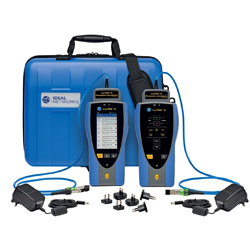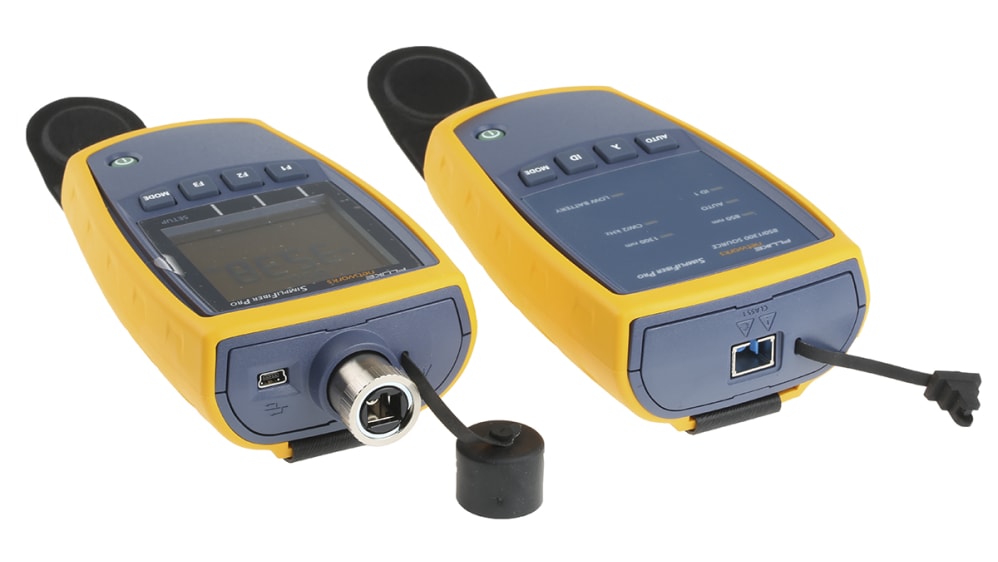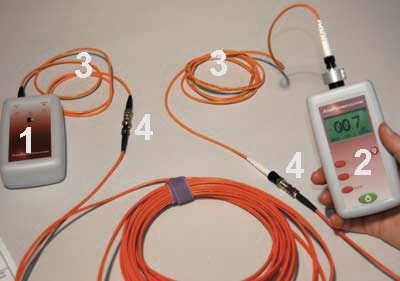Why an automated optical fibre diameter analyzer is revolutionizing modern fiber testing labs
Wiki Article
A Comprehensive Guide to Optical Measurement System for Fiber Analysis
When it pertains to fiber analysis, comprehending optical measurement systems is essential for examining performance and ensuring top quality. You'll check out important methods like interferometry and spectroscopy, which aid you measure key criteria. There's more to it than simply these methods; understanding attenuation measurement techniques can greatly affect your network's performance. As you browse with this guide, you'll reveal understandings that can change your method to fiber optics.Understanding Optical Measurement Equipments
When you explore optical measurement systems, you'll discover they're crucial for examining fibers with accuracy. These systems utilize light to evaluate different characteristics of fibers, consisting of size, refractive index, and harmony. By employing techniques like interferometry and spectroscopy, you can gain valuable insights into the fiber's properties.You'll find that these systems are made to lessen errors and improve accuracy, ensuring reliable information for your analysis. Various configurations, such as single-mode and multi-mode systems, accommodate details fiber kinds, permitting you to choose the finest suitable for your needs.Moreover, the combination of innovative software program devices helps you analyze the information efficiently, making it much easier to recognize any kind of disparities or flaws. As you investigate much deeper right into these measurement systems, you'll value exactly how they simplify the analytical procedure and boost the overall top quality of fiber manufacturing and screening.Key Parameters for Fiber Evaluation
Secret specifications for fiber analysis play an essential function in identifying the top quality and efficiency of fiber optics. When you assess a fiber, you'll intend to concentrate on characteristics such as attenuation, data transfer, and modal dispersion. Depletion measures the loss of signal strength as light trips via the fiber. A reduced attenuation value suggests far better top quality and longer transmission distances - optical measurement system.Bandwidth describes the data-carrying ability of the fiber and is essential for high-speed interaction. You'll require to assess the transmission capacity to assure it meets your application demands. Modal dispersion, which emerges from the various speeds at which light trips via various settings in multimode fibers, influences signal clarityMethods for Depletion Measurement

Bandwidth and Its Impact on Efficiency
Recognizing data transfer is essential for enhancing fiber efficiency, as it straight influences the quantity of data that can be transmitted over a network. Higher transmission capacity means you can send even more information simultaneously, permitting for faster interaction and far better total efficiency. When you're collaborating with optical fibers, it's important to take right into account how transmission capacity connects with fiber features, such as core size and product properties.If the data transfer is limited, you might experience data loss or slower rates, impacting your applications. Additionally, different sorts of fibers can support varying bandwidth degrees, so it is essential to select the ideal fiber for your certain needs.You must additionally remember that ecological elements, like temperature and external disturbance, can affect bandwidth. By comprehending these facets, you can make enlightened choices to boost your fiber optic systems, guaranteeing reputable and efficient information transmission.Refractive Index Measurement Approaches

Total Internal Reflection
Complete internal representation (TIR) acts as an essential principle for gauging the refractive index of fibers. When light trips from a denser tool to a much less dense one, it can just be fully shown if the angle of incidence surpasses a details threshold, called the crucial angle. This sensation allows you to determine the refractive index by evaluating the angles at which light shows or refracts. By utilizing a setup that routes light into a fiber and gauges the resulting angles, you can compute the refractive index precisely. Understanding TIR not just boosts your fiber evaluation however likewise boosts the layout and efficiency of optical systems. So, leveraging TIR can lead to extra efficient fiber-based applications.Interferometric Techniques
Building on the concepts of complete inner representation, interferometric methods give a powerful methods for determining the refractive index of fibers with high precision. These approaches manipulate the disturbance patterns created when beams split and recombine after traveling various courses. You can make use of arrangements like the Michelson or Mach-Zehnder interferometer to examine stage shifts triggered by optical fibre diameter analyzer changes in refractive index. By thoroughly calibrating your system and evaluating the resulting edges, you can establish the refractive index with impressive accuracy. It's vital to maintain secure environmental problems to reduce mistakes. With these techniques, you'll enhance your understanding of fiber buildings, bring about better efficiency in various applications, from telecoms to sensing unit technology.Modal Dispersion and Its Significance
Modal dispersion refers to the dispersing of light pulses as they travel through a fiber, which can impact the general efficiency of the system. You'll see that this phenomenon can result in signal distortion, impacting data transmission prices and top quality. Comprehending its importance is important for enhancing fiber optic styles.Definition of Modal Dispersion
In fiber optics interactions, modal diffusion plays a considerable function in identifying signal quality and transmission rate. It takes place when different light modes travel at differing rates with the fiber. Considering that each mode has distinctive paths and attributes, they can come to the receiving end at different times. This moment distinction can bring about signify dispersing and distortion, which can break down the total performance of the interaction system. You could run into modal dispersion mostly in multimode fibers, where the several courses of light exacerbate the issue. Recognizing modal dispersion is vital for enhancing fiber layouts and making certain that your communication systems operate efficiently, keeping the integrity of the transmitted signals over longer ranges.Effects on Fiber Performance
Recognizing modal dispersion assists highlight its effects on fiber efficiency. This sensation happens when various settings of light travel at differing rates within the fiber, resulting in signify dispersing over time. As you analyze optical fibers, you'll observe that boosted modal diffusion can significantly degrade signal top quality, resulting in reduced data transfer and longer transmission distances. In practical terms, this means your data can arrive distorted or postponed, influencing general interaction efficiency. To alleviate these impacts, you may take into consideration utilizing single-mode fibers, which decrease modal diffusion. By choosing the appropriate fiber type and comprehending exactly how modal dispersion affects efficiency, you can enhance transmission high quality and assurance trusted information transfer in your optical dimension systems.Devices and Technologies for Optical Measurements
When it involves optical dimensions, several innovative tools and innovations go to your disposal to enhance fiber analysis. You'll find fiber optic testers, which analyze signal high quality and performance, essential for maintaining perfect network effectiveness. Optical time-domain reflectometers (OTDRs) are critical for finding mistakes and gauging loss over distances, offering in-depth insights into fiber integrity. In addition, spectrometers can examine light ranges, assisting you determine material buildings and composition.Don' t forget the relevance of imaging systems, like digital microscopes, that enable you to visually check fiber surfaces for defects. Additionally, consider using polarization analyzers to measure stress and anxiety and stress in fibers, which is crucial for understanding their behavior under different conditions. By leveraging these devices and modern technologies, you can considerably improve your fiber analysis processes, guaranteeing dependability and high performance in your optical networks.Often Asked Concerns
What Are the Prices Related To Optical Measurement Equipments?
The costs associated with optical dimension systems can vary substantially. You'll need to examine devices costs, maintenance costs, software application licenses, and potential training expenses. Budgeting very carefully will help you stay clear of unanticipated financial difficulties down the line.
Exactly How Often Should Fiber Analysis Be Done?
You must carry out fiber evaluation consistently, generally every six months or after considerable adjustments in the setting (optical measurement system). This assures perfect efficiency and assists recognize prospective concerns prior to they affect your system's effectiveness and reliabilityCan Optical Measurement Solutions Be Calibrated in your home?
Yes, you can calibrate optical measurement systems in your home, however it requires precision. Make particular you adhere to the maker's standards, utilize suitable calibration requirements, and ascertain your outcomes to ensure precision in your measurements.
What Industries Commonly Use Optical Measurement Equipments?
You'll locate optical measurement systems extensively used in sectors like telecoms, production, healthcare, and research. They're crucial for quality assurance, fiber analysis, and guaranteeing precise dimensions in different applications, improving effectiveness and accuracy throughout sectors.Exist Any Safety And Security Worry About Optical Measurement Systems?
Yes, there are safety and security worries with optical dimension systems. You need to always put on protective eyewear to shield your eyes from extreme lights and assurance proper training to handle equipment securely and avoid crashes.Report this wiki page